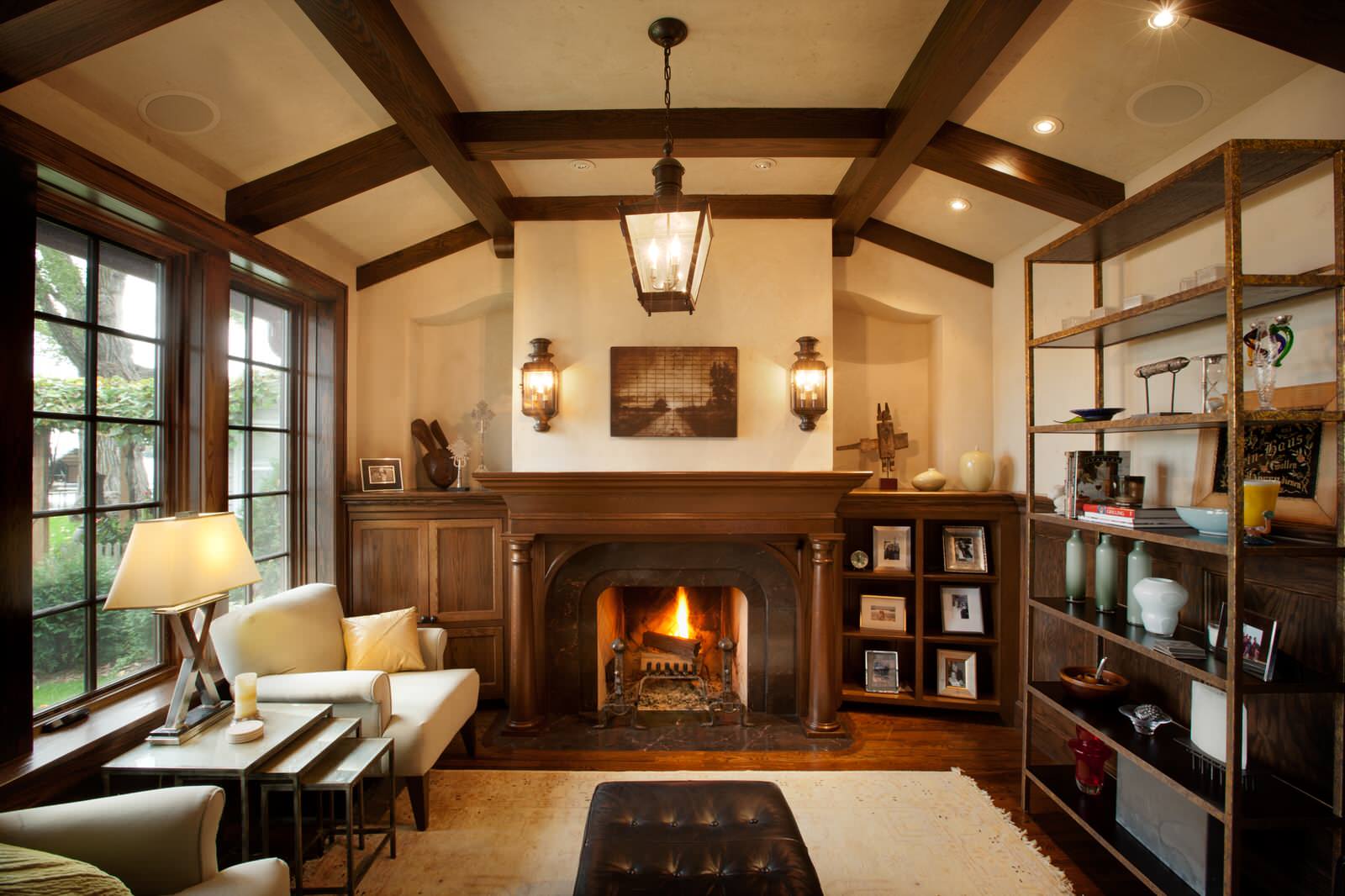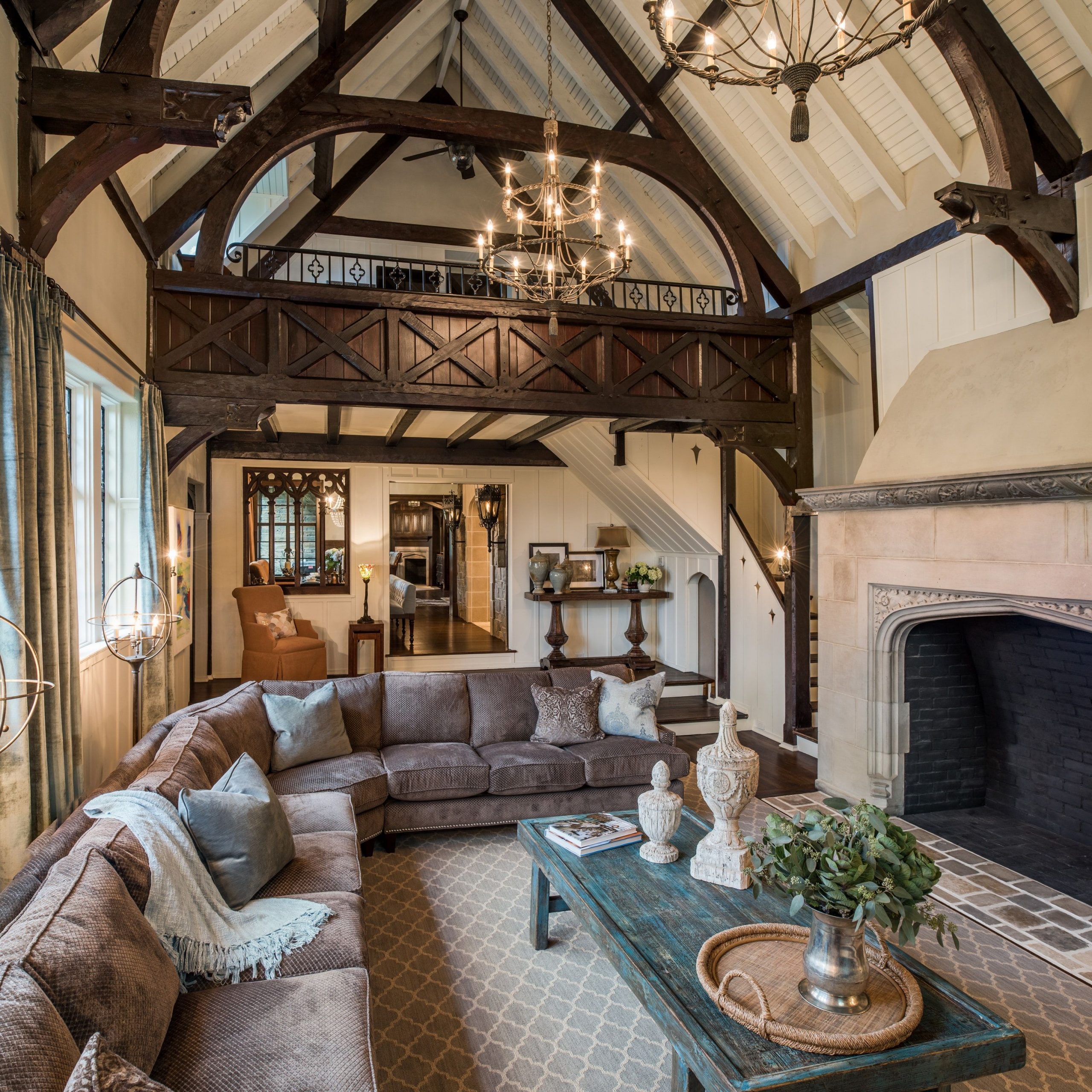Tudor Interior Design History and Characteristics

Tudor interior design emerged during the Tudor period in England, spanning from the late 15th century to the mid-16th century. This style is heavily influenced by medieval and Gothic architecture, as well as Renaissance influences from continental Europe.
Tudor interiors are characterized by their use of natural materials, such as oak, stone, and tapestries. Exposed beams, vaulted ceilings, and mullioned windows are common architectural features. The overall effect is one of warmth and comfort, with a focus on functionality and practicality.
Architectural Features
Tudor interiors are known for their distinctive architectural features, which include:
- Exposed beams: Heavy, wooden beams are often left exposed, creating a sense of warmth and rustic charm.
- Vaulted ceilings: Vaulted ceilings, often in the form of barrel vaults or groin vaults, add height and drama to a room.
- Mullioned windows: Windows are typically divided by mullions, creating a grid-like pattern that is both decorative and practical.
Elements of Tudor Interior Design

Tudor interior design was characterized by its rich use of textiles, heavy furniture, and decorative elements.
Textiles and Fabrics, Tudor interior design
Tapestries, linens, and velvets were commonly used in Tudor interiors. Tapestries were often used to depict scenes from history, mythology, or religion. Linens were used for tablecloths, napkins, and bed linens. Velvets were used for curtains, upholstery, and clothing.
Furniture
Tudor furniture was typically made of heavy oak. Tables were often large and rectangular, with carved legs and a trestle base. Chairs were also made of oak, and were often carved with intricate designs. Four-poster beds were common, and were often hung with curtains for privacy.
Decorative Elements
Stained glass, wrought ironwork, and ceramic tiles were commonly used as decorative elements in Tudor interiors. Stained glass was often used in windows, and depicted scenes from the Bible or from everyday life. Wrought ironwork was used for gates, fences, and other architectural features. Ceramic tiles were often used for flooring and wall coverings.
Modern Interpretations of Tudor Interior Design

The enduring charm of Tudor interior design continues to inspire contemporary spaces, offering a blend of rustic elegance and modern functionality. By incorporating key elements and adapting them to suit current lifestyles, designers can create interiors that seamlessly fuse the past and present.
Tudor-inspired furniture and decor often feature clean lines and geometric shapes, reflecting the architectural style of the era. Upholstered pieces in rich fabrics like velvet and leather evoke a sense of luxury, while exposed beams and stone accents add a touch of rustic charm. Modern lighting fixtures, such as sleek chandeliers and wall sconces, enhance the ambiance and create a warm and inviting atmosphere.
Materials and Finishes
Tudor interiors often showcased a combination of natural materials, including wood, stone, and plaster. In modern interpretations, these materials can be used in a more refined and understated way. For example, reclaimed wood beams can be paired with smooth plaster walls and polished stone floors to create a sophisticated yet rustic look.
Color Palette
Traditional Tudor interiors typically featured a rich color palette, with deep reds, greens, and blues dominating. In contemporary spaces, these colors can be used as accents, paired with neutral shades like white, gray, or beige. This approach creates a more balanced and inviting atmosphere while still retaining the warmth and character of the Tudor style.
Textiles and Patterns
Textiles and patterns played a significant role in Tudor interiors, adding texture and visual interest. In modern interpretations, traditional patterns like herringbone, plaid, and damask can be used in a more subtle way, such as on throw pillows, curtains, or upholstery. The use of natural fibers like linen and wool adds a touch of rustic charm, while velvet and silk provide a more luxurious feel.
Lighting
Lighting is an essential element in creating the ambiance of a Tudor-inspired interior. Natural light is maximized through large windows, while artificial lighting is provided by a combination of chandeliers, sconces, and candles. Modern lighting fixtures can be used to complement the traditional style, such as sleek chandeliers with exposed bulbs or wall sconces with geometric shapes.
The distinctive grandeur of Tudor interior design lies in its intricate woodwork, tapestries, and lavish furnishings. Its rich history and opulence continue to inspire modern-day inside decor , blending traditional elements with contemporary aesthetics. The result is a timeless and sophisticated space that evokes the grandeur of the Tudor era while embracing the comforts of the present.
Tudor interior design is characterized by its heavy use of wood, dark colors, and intricate carvings. If you’re looking to create a Tudor-style home, there are a few things you’ll need to keep in mind. First, you’ll need to find a decor company that specializes in Tudor design.
They can help you choose the right furniture, fabrics, and accessories to create the perfect look. Tudor interiors often feature large fireplaces, beamed ceilings, and stained glass windows. By following these tips, you can create a Tudor-style home that is both beautiful and authentic.